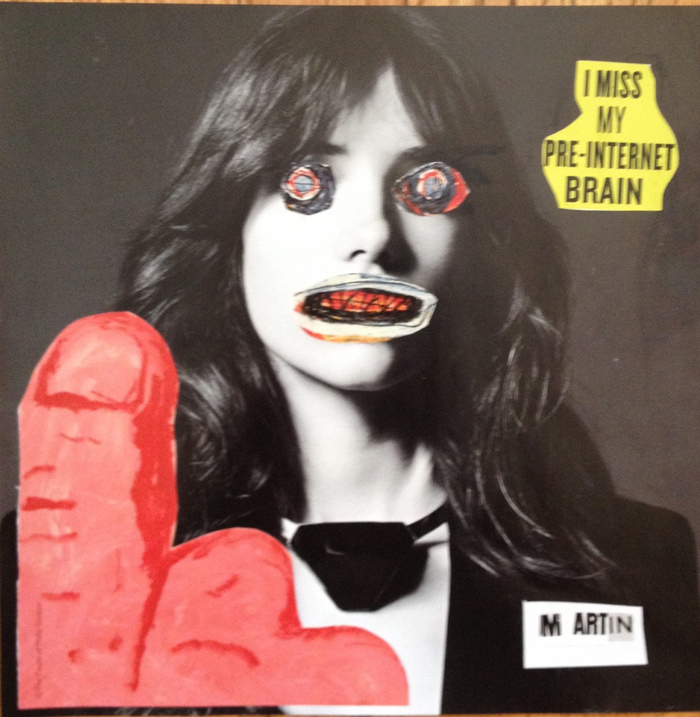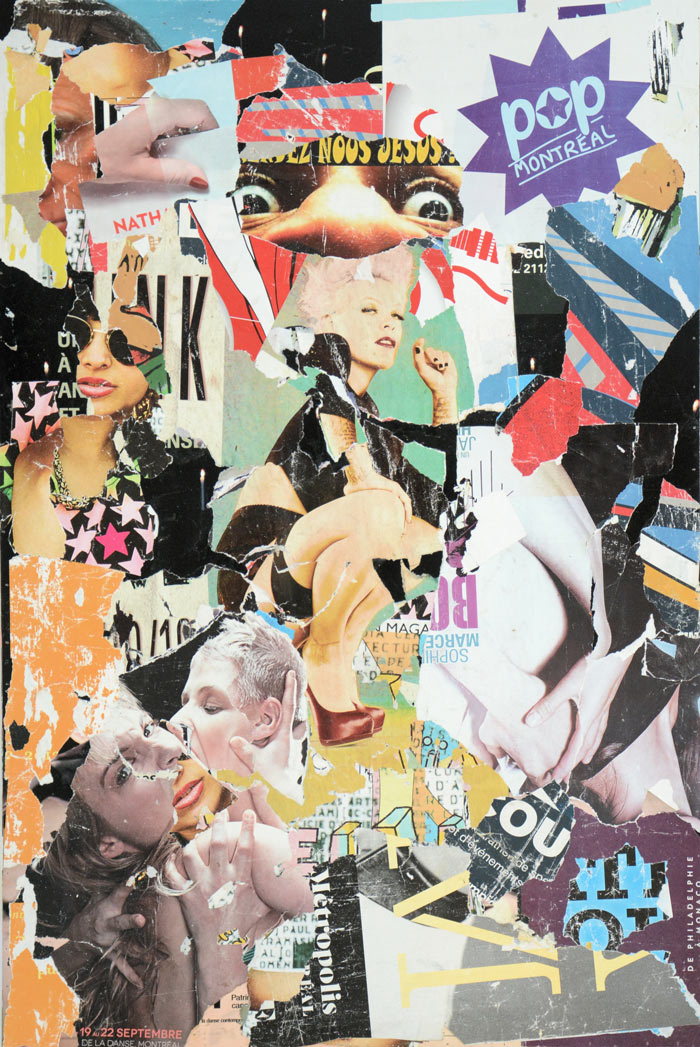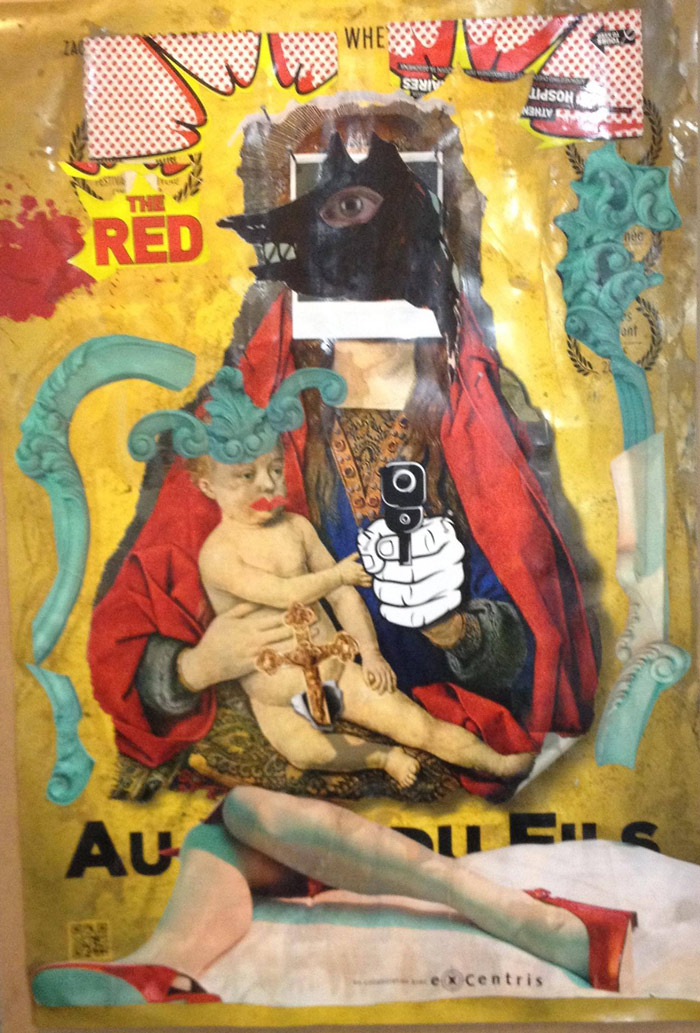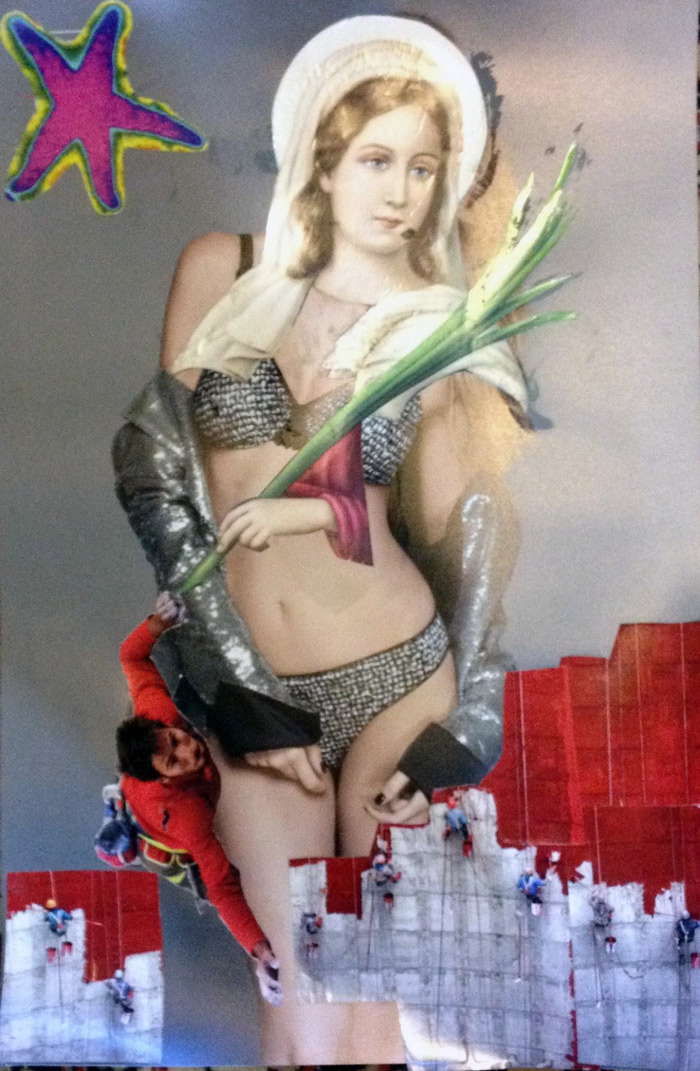Jean Martin aka Raven
|
Jean Martin aka Raven STATEMENT For more than 20 years, Jean Martin aka Raven has been exploring sculpture and composition through collage, using lacerated posters found in the streets. Those posters fragments, often composed of numerous layers, are for this artist both a social and a historical mirror of our urban territory. He cuts, glues, layers, composes and recomposes, adding graffiti, presenting the finished works on various supports. In so doing, Raven creates a dialogue, the images creating new narratives. Those sociopolitical and cultural symbols thus constitute a collective memory of society. While the signs are often unreadable, the observer cannot but try to make sense of the letters and the words, some images emerging from the layers like old memories. “I claim a link with Art history, with the French New Realists movement, while Raymond Hains and Jacques Villeglé promoted this practice in the early 60s. I pursue their work and assume this affiliation,” explains the artist, defying the concepts of perspective and common sense of the observer, offering him a commentary sometimes mocking, but always lucid on the world of the image and publicity. BIO Born in Casablanca, Morocco to a French father and a Sephardic mother, Jean Martin aka Raven immigrated to Canada with his parents at the age of six. He did primary and secondary studies in English in Montreal. Not knowing which career to follow, he decided to join the Norwegian merchant marine. After working hard while traveling the world, he returned to Montreal to finish his studies at Vanier College. Vanier College is where his interest in art began. After meeting Brother Gérôme and later Françoise Sullivan, he began to create minimalist paintings in the style popularized by the Automatists. In the early 1980s, although abstraction interested him, it no longer responded to his need to express himself, so he moved to a more figurative style that was also more spontaneous. The messages he wanted to convey were more like art brut or even gestural. Several visits to New York exposed him to the New Art or Neo Expressionism of Basquiat, Fischel, Schnabel and Bosman. He decided to rent a studio-loft in Old Montreal, a 3,300-square-foot former dance studio in the Hemsley Building. There, he created a large series of paintings. At the time, because artist lofts were affordable, large format paintings were quite popular. He exhibited these works at the Pink Gallery and in Montreal’s Maisons de la Culture. In addition, the Hemsley workshop was also an old warehouse filled with objects of all kinds, which attracted Raven’s attention and inspired him to make sculptures. Assemblage, influenced by Marcel Duchamp, gave new life to all of those abandoned objects. In 1988, he presented one of these sculptures for the Duchamp-Villon competition at the Edouard Montpetit Gallery (Plein Sud) and won the first prize, awarded by Normand Biron. The sculpture, Eros, was purchased by the gallery and the award was given by Charles S.N. Parent, who was the president of Vie des Arts. The prize included admission to the HÉC Montreal and Raven took courses in Art Career Management. During the 1990s recession, many galleries closed their doors. For an unconventional artist like Raven, only the Maisons de la Culture and artist-run centres were available to exhibit work. Sales became difficult and Raven drew back from the gallery circuit. He enrolled at Concordia University and earned a BFA in Studio Art (Sculpture) in 2002. During his studies, he was interested in metal and ceramic sculpture. He created a series of works that were shown in a solo show at Galerie d’Outremont and in “Entre Voir”, which toured the Montérégie region of Quebec for two years. In 2003, he made a two-year pilgrimage to Santiago de Compostela, a journey that led him on foot through France and Spain. During the journey, he was introduced to meditation and cosmic wave theory. He took stock of his career and approach. Upon his return, he began a new series of paintings and sculptures that reflected his new state of mind: more gestural painting and more primitive sculpture with an emphasis on the fabrication process. In his painting, he adopted an all-over technique, as well as drip and collage, techniques he had mastered in the 1980s. These forms of expression were a good fit for the new philosophy and Raven’s desire to control the painting, while also leaving something unexpected. The recalled image and the unconscious are very present in this series of works. Around 2005, Raven began to exhibit more regularly in galleries, including Quartier Libre, Usine 106U and Diagonale Fiber Arts Centre of Quebec. He met several speakers in the arts: Stephan Aquin, Alain Tremblay, Alain Fosset, and Roland Poulin, who inspired Raven to continue to the next step of sculpture and painting. This new direction encouraged him to explore the history and social dimensions of the city, through installation, sculpture and paintings. Using posters and recycled materials, collected through strolls in the streets and abandoned places, he creates works that reflect the notion of present or past events. Raven is one of the rare artists in North America who use this medium for artwork and that also, historically, posters have been one of the primary forms of public information since the Middle Ages. He sees posters as the first modern medium of a social communication, where media and political events are shared with the public. An urban poacher, he tears the posters down at night. This mode of collection and transformation corresponds to the artist Raven wants to be and is also common among artists who are a product of the 1980s. Reappropriating a product of society by transforming it into a work of art is related to American Pop Art or the Italian Arte Povera. Each poster covers a multitude of superimposed posters forming a rigid structure which allows a work at the surface level created by scratching, décollage and graffiti. Raven works with the materials like a sculptor creating new ideas. Following this research, he wants his work to be related to the world of art, not just for what it represents figuratively, but also for how it is made. He tries to make sculptures and paintings, whose status does not rest just on their symbolic message, but also on the choice of materials and the so-called minimal manufacturing techniques. Raven said, “I questioned my practice and affirmed my position as an artist by practicing my art using basic materials and forms, especially when only rudimentary tools were available to me. My commitment as an artist in recent years has been to emphasize the manufacturing process, despite the fact that my work is figurative.” ARTIST CONTACT [click to email] IMAGES
|





